Key takeaways
- Roasting vegetables enhances their natural sweetness and flavor, ideally at temperatures around 400°F for optimal results.
- Choosing sturdy, hearty vegetables like root vegetables and Brussels sprouts ensures better caramelization and texture.
- Proper spacing on the baking sheet and flipping vegetables halfway through cooking are crucial to achieve desired crispiness and even cooking.
- Seasoning thoughtfully and allowing vegetables to rest with spices enhances flavor, while patience in roasting yields richer tastes.
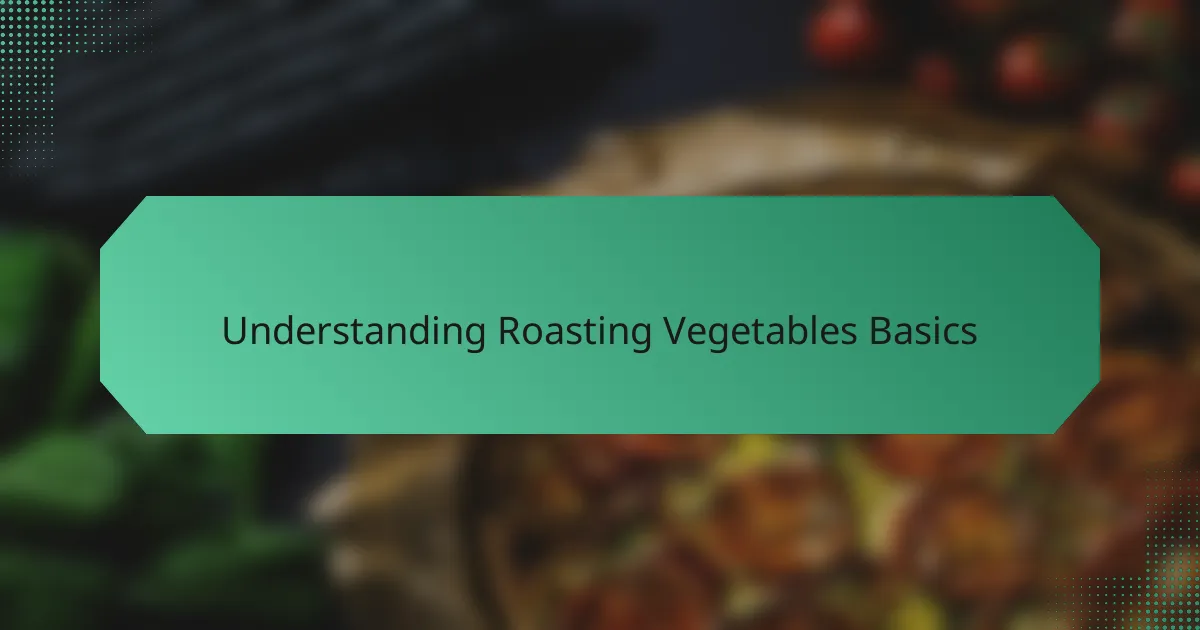
Understanding Roasting Vegetables Basics
Roasting vegetables is all about coaxing out their natural sweetness and intensifying their flavors through dry heat. I remember the first time I roasted carrots and was amazed at how a simple process transformed them into something almost caramel-like, bursting with complexity. Have you ever noticed how roasting draws out an irresistible depth that steaming or boiling just can’t achieve?
A key part of roasting is understanding the right temperature and time. Too low, and the veggies become mushy; too high, and they burn without cooking through. From my experience, starting around 400°F strikes the perfect balance to get that golden, crisp exterior while keeping the inside tender and juicy.
Another subtle but important aspect is how you prepare the vegetables before roasting. Coating them lightly with oil and seasoning isn’t just about flavor—it helps create that coveted crispy texture. I find that this small step makes a huge difference, turning simple ingredients into something truly satisfying and rich.
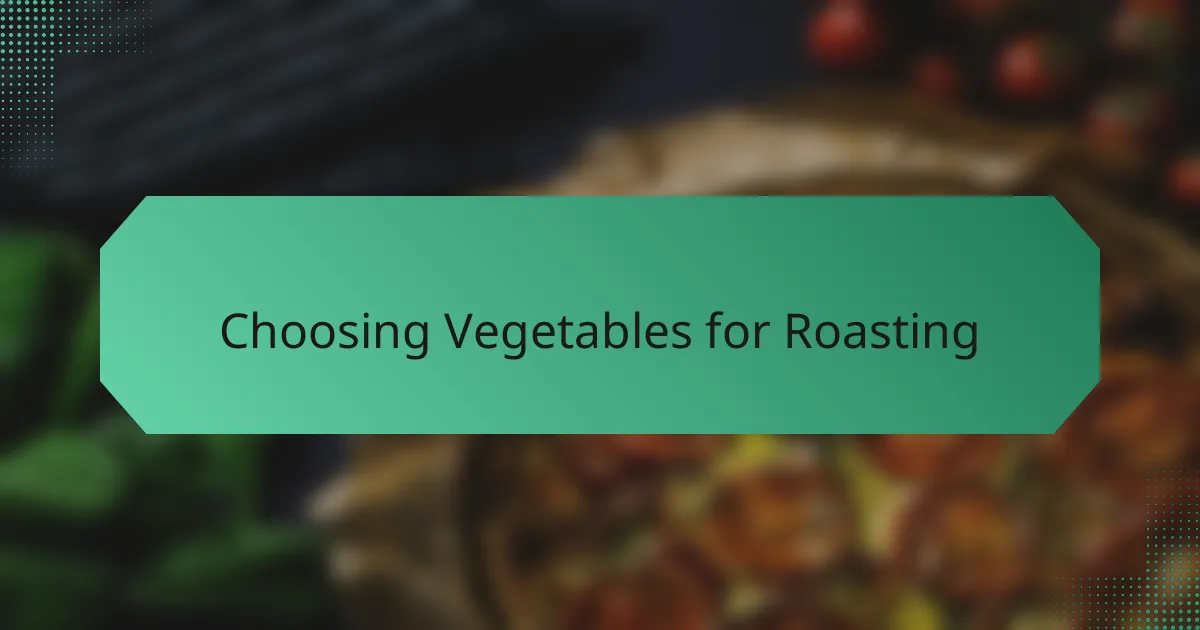
Choosing Vegetables for Roasting
When I choose vegetables for roasting, I always look for ones that can hold up well to high heat without turning into mush. Root vegetables like carrots, sweet potatoes, and parsnips are my go-to because they develop this incredible caramelized crust that makes every bite a flavor bomb. Do you ever find that some veggies just seem to disappear on the pan? That’s usually because they’re too watery or delicate for roasting.
I’ve also discovered that sturdier vegetables like Brussels sprouts and cauliflower offer a wonderful balance—they crisp up on the outside while staying tender inside. Sometimes I mix different textures and flavors, which keeps the roasting pan interesting and the results more dynamic. It’s a bit like creating a flavor symphony, where each vegetable’s characteristics complement the others perfectly.
On the other hand, some greens don’t take well to roasting on their own. I’ve learned to save those for sautéing or quick wilts instead. But have you ever roasted something unexpected, like fennel or beets? Those experiences taught me that trying new veggies can open up a whole world of flavor possibilities, even if they seem unusual at first.
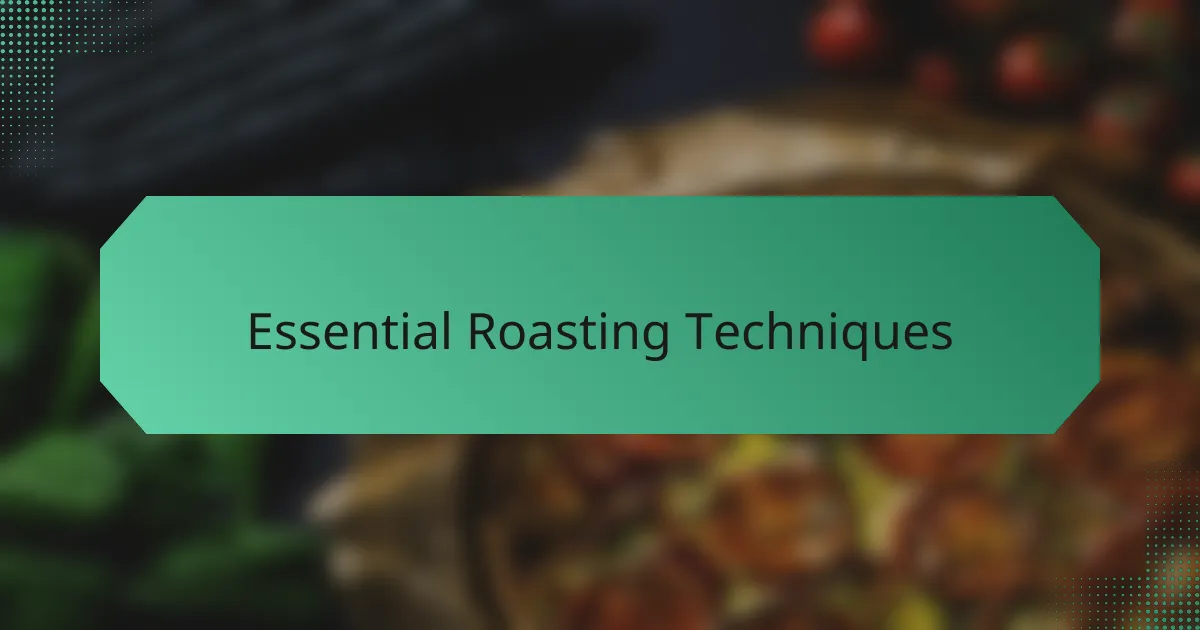
Essential Roasting Techniques
One essential technique I’ve learned is to give each vegetable enough space on the baking sheet. Crowding the pan might seem like a time-saver, but it actually traps steam, preventing that beautiful browning we’re after. Have you ever taken your veggies out of the oven only to find them steamed rather than roasted? Spreading them out makes all the difference.
Another tip I swear by is flipping the vegetables halfway through roasting. This little move ensures even caramelization and prevents any one side from burning. I remember one batch of roasted broccoli that went from perfect to charred on one side simply because I forgot this step—it was a tough lesson, but now it’s a ritual.
Finally, heat management is crucial. I like to preheat my oven fully to maintain a steady high temperature. This guarantees that sizzle as soon as the vegetables hit the pan, locking in moisture and flavor. Isn’t that initial hiss the sound of flavor being born? It’s a sound I always look forward to in the kitchen.
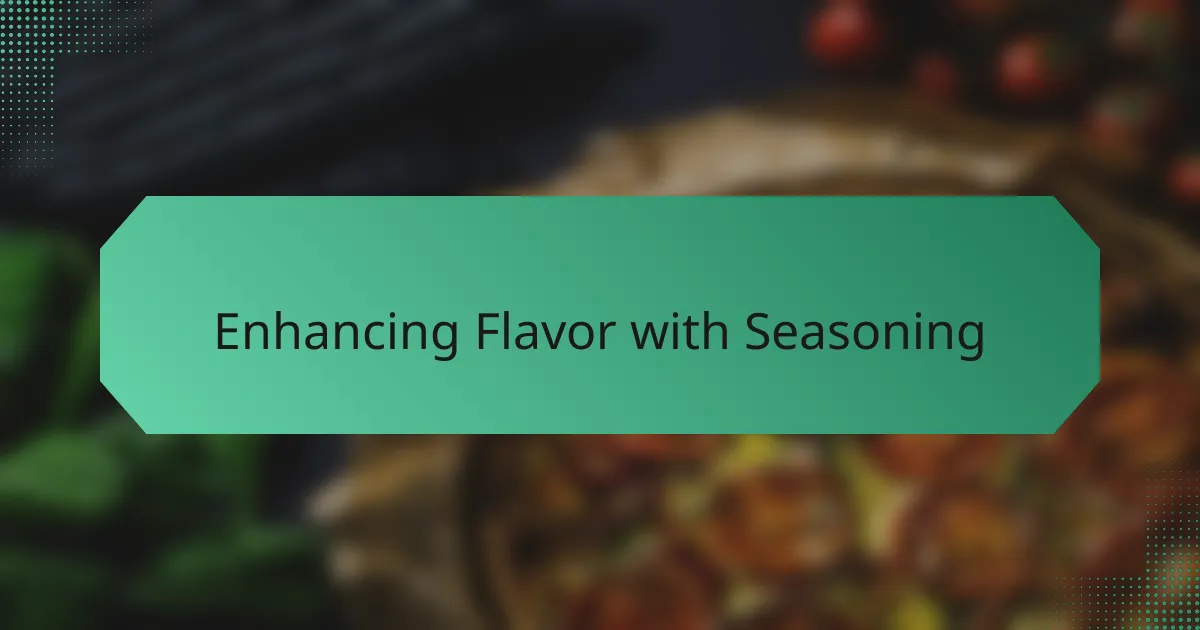
Enhancing Flavor with Seasoning
Seasoning is where roasting really comes alive for me. I’ve found that a simple sprinkle of salt and freshly cracked black pepper can make the natural sweetness of roasted vegetables pop, but adding herbs like rosemary or thyme takes the flavor to another level. Have you ever noticed how a pinch of smoked paprika or a dash of garlic powder can add unexpected warmth and depth to a tray of veggies?
It’s funny how the timing of seasoning matters, too. I used to toss everything in the oil and seasonings right before roasting, but recently I started letting the veggies sit with the seasoning for 10-15 minutes beforehand. That little pause lets the flavors really sink in, and trust me, it shows in the taste. It’s like giving your vegetables a moment to get cozy with the spices before the heat works its magic.
Sometimes, I like to finish off my roasted veggies with a squeeze of fresh lemon or a drizzle of balsamic glaze. That bright acidity or subtle sweetness provides a wonderful contrast to the caramelized edges, creating a balance that keeps each bite exciting. Do you ever feel like seasoning is an art rather than just a step? For me, it certainly is—it’s where personality gets added to each dish.
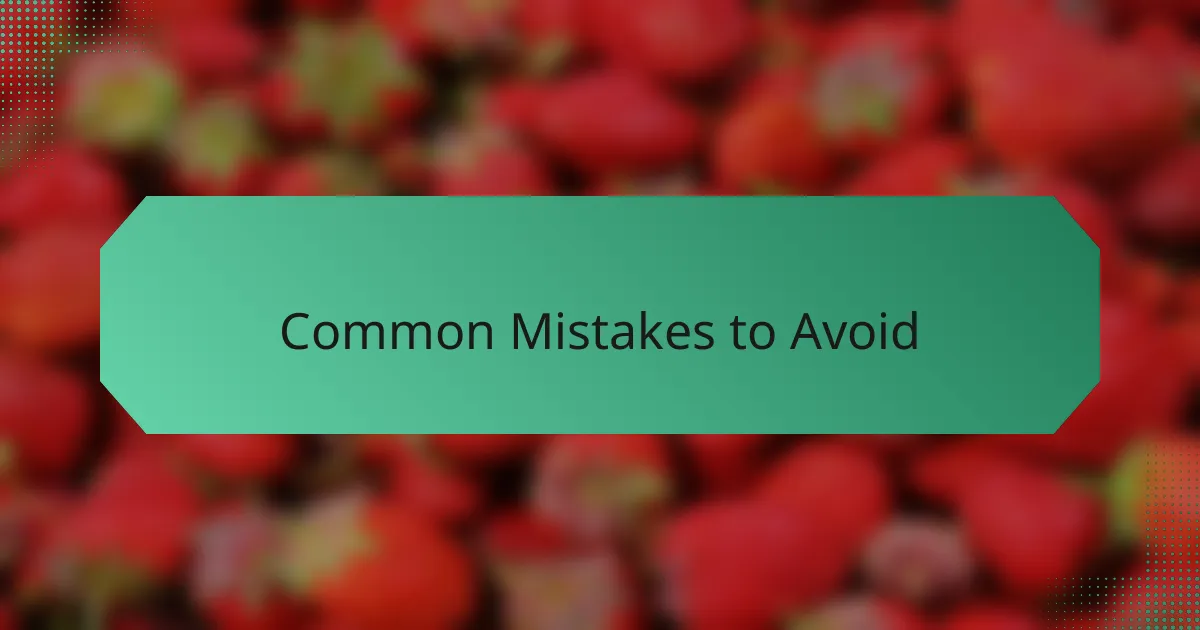
Common Mistakes to Avoid
One mistake I see people make often is overcrowding the pan. Early on, I used to cram every veggie onto one sheet to save time, but the result was soggy, steamed messes instead of those crisp, caramelized bites I was aiming for. Have you ever pulled out a pan full of limp vegetables and wondered what went wrong? Spacing them properly is a game changer.
Another pitfall is roasting at inconsistent temperatures. I remember trying to rush dinner by lowering the heat, only to end up with unevenly cooked and pale veggies that lacked flavor. From my experience, sticking to a steady, moderately high temperature makes all the difference—it’s what brings that golden color and rich taste.
Lastly, don’t skip flipping the vegetables halfway through roasting. I’ve learned this the hard way, when one side charred while the other stayed raw. Simple but crucial, turning them ensures every piece gets that perfect crunch and caramelization we all love. Have you ever had a batch turn out uneven? Flipping will fix that every time.
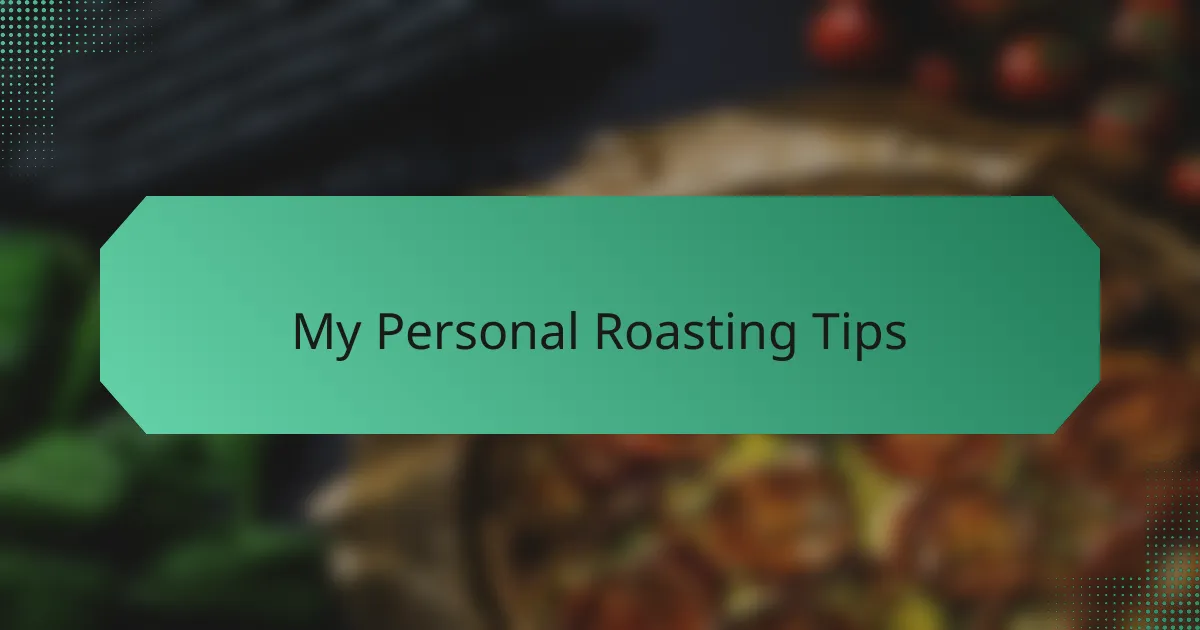
My Personal Roasting Tips
One tip I always stick to is making sure the vegetables are cut into uniform pieces. Early on, I thought a random chop was fine, but uneven sizes meant some veggies roasted perfectly while others were either burnt or undercooked. Have you noticed how consistent pieces create a harmony of texture and flavor? It’s a small step that pays off big time.
I also swear by tossing the veggies with just enough oil to coat without drowning them. Too much oil can lead to soggy edges, which defeats the purpose of roasting. I learned this after one frustrating batch where the vegetables looked shiny but lacked that crispness I crave. Finding that oil balance has made every roast much more satisfying.
Lastly, patience has been key for me. There were times I rushed to pull the vegetables out early, worried they’d burn, only to be disappointed by bland, underdeveloped flavors. Waiting until they get those golden-brown edges might require a little willpower, but trust me, it’s worth it. Don’t you agree that patience often brings out the best taste?
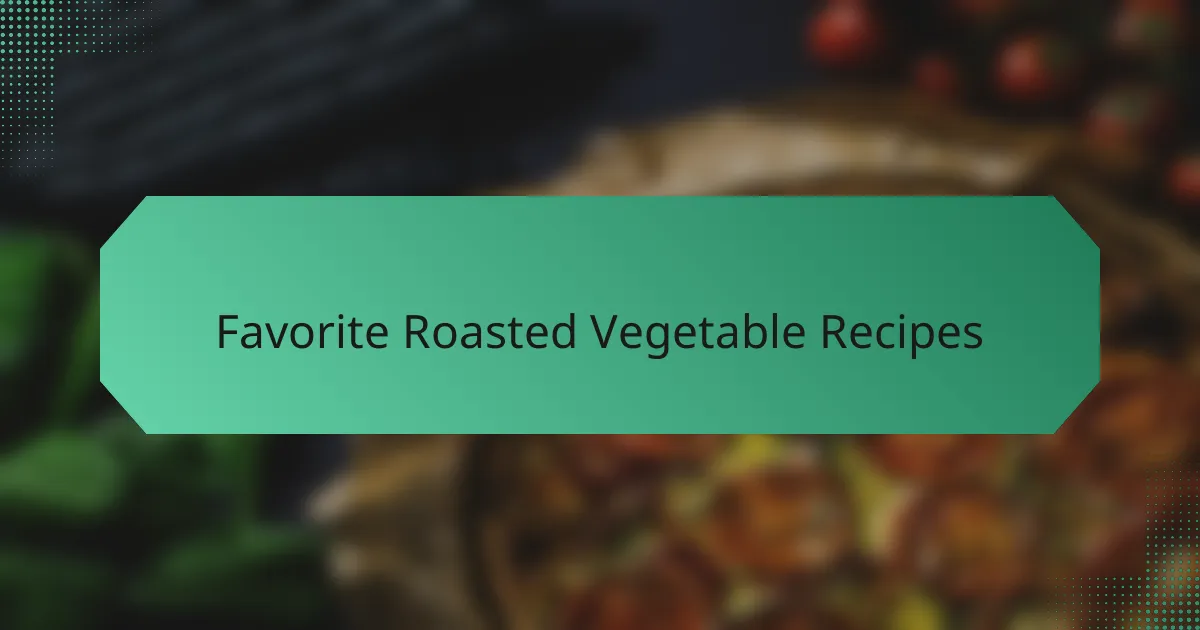
Favorite Roasted Vegetable Recipes
When it comes to my favorite roasted vegetable recipes, I always circle back to a simple tray of mixed root vegetables—think carrots, sweet potatoes, and parsnips. I remember one autumn evening when I roasted them with a drizzle of maple syrup and a sprinkle of cinnamon; the aroma filled my kitchen and every bite felt like a warm hug. Have you ever experienced that moment when a humble mix turns into something unexpectedly comforting and delicious?
Another go-to recipe I love is roasted Brussels sprouts tossed with balsamic vinegar and a touch of garlic. The slight tang of the vinegar paired with their crispy edges creates this beautiful contrast that keeps me reaching for more. It’s funny how such a small twist can elevate a classic vegetable into a dish that feels fancy yet so approachable.
Sometimes, I get adventurous and roast fennel with orange zest and thyme. It’s not a routine choice, but the sweet, anise-like flavor of fennel caramelizes beautifully, releasing a fragrance that instantly brightens the whole kitchen. Have you tried roasting something out of the ordinary? I find that stepping outside the usual veggies often leads to delightful surprises.